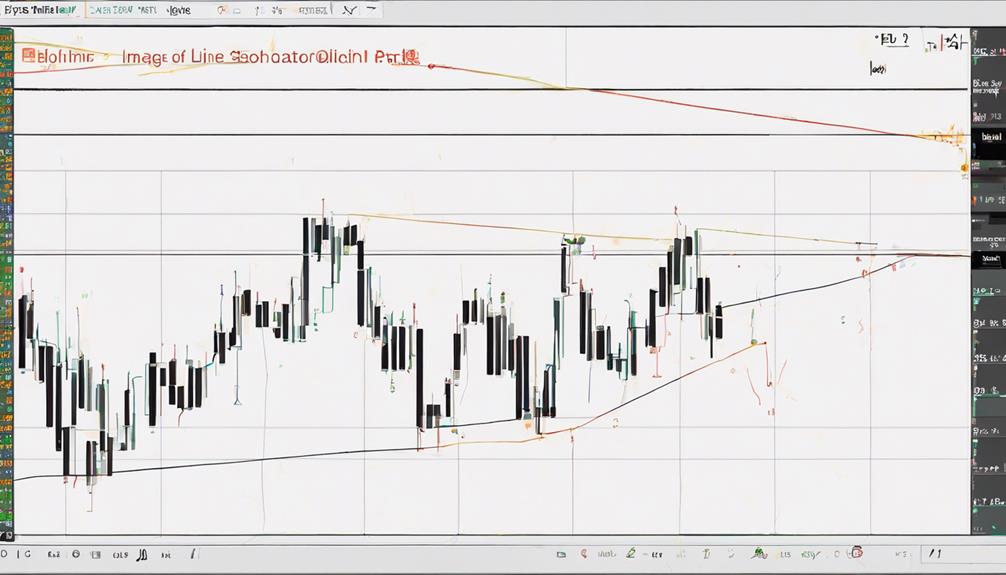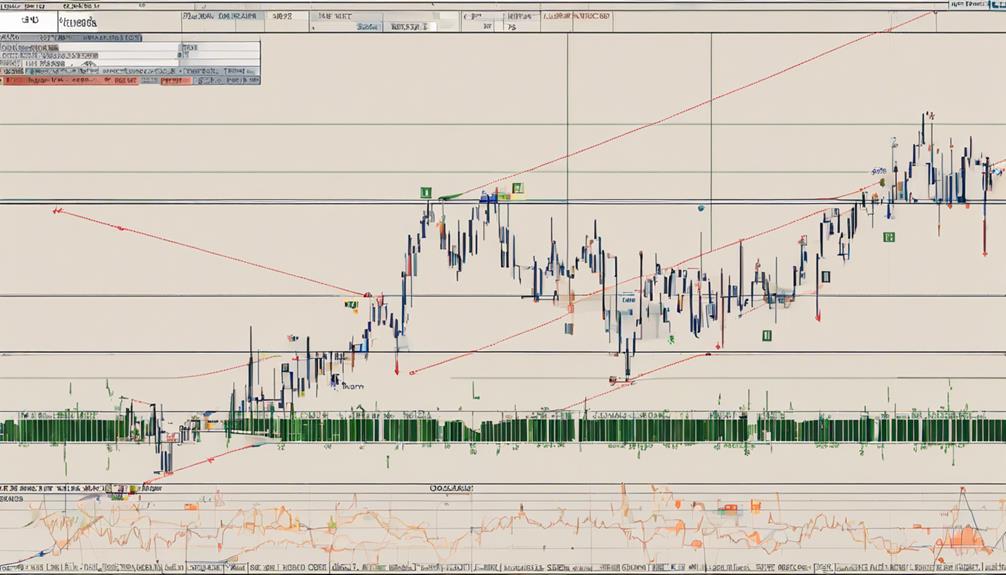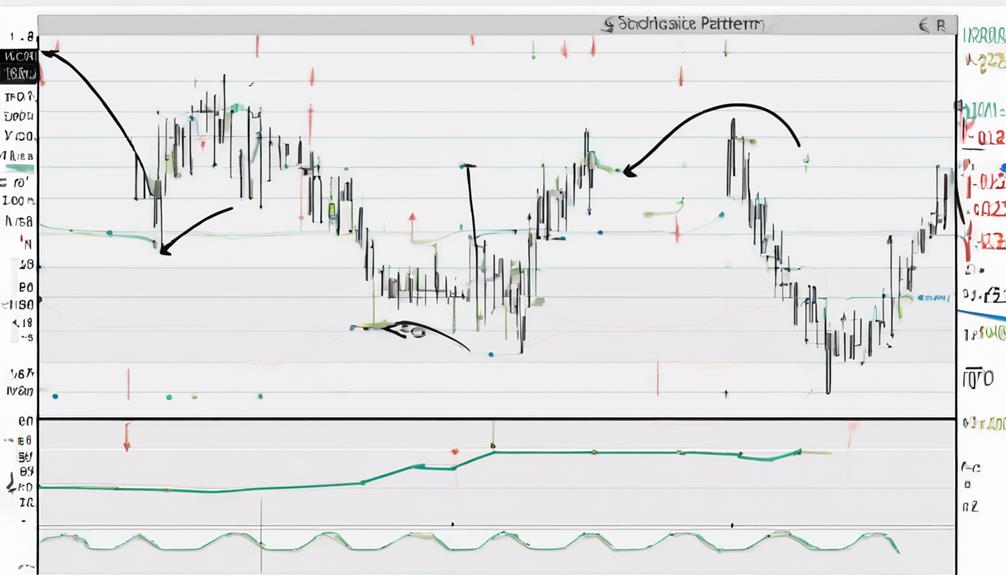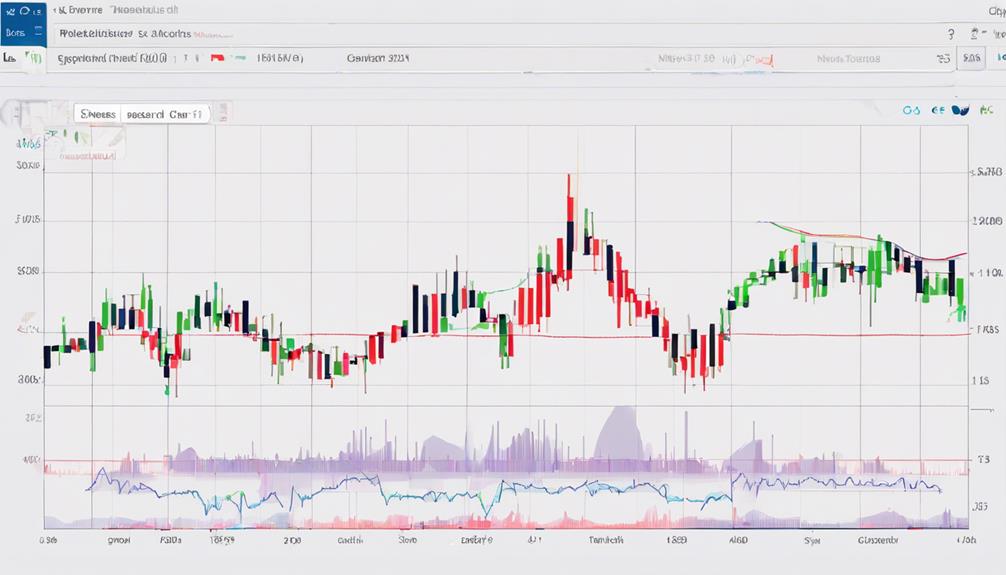When observing a Stochastic Oscillator chart, you might notice a scenario where the indicator crosses above the 80 threshold, indicating an asset's potential overbought status. This pivotal point can trigger various reactions in the market, influencing traders' decisions.
Understanding how these patterns unfold and what they signify can provide valuable insights into market dynamics and potential trading opportunities.
As you explore the intricacies of stochastic oscillator chart patterns, you'll uncover a wealth of information that can enhance your trading strategies and decision-making processes.
Key Concepts of Stochastic Oscillator Patterns
When analyzing stochastic oscillator patterns, it's essential to grasp the fundamental concepts that underpin their interpretation for effective trading decisions. The stochastic oscillator is a valuable tool for identifying potential trend reversals by indicating overbought and oversold conditions in the market.
Chart patterns, such as bullish or bearish divergences, provide insight into price momentum shifts relative to the oscillator readings. These patterns aid traders in pinpointing entry and exit points by interpreting formations on the charts.
Understanding how stochastic oscillator patterns interact with price movements enhances one's technical analysis skills and improves the ability to predict future price trends accurately. By mastering these key concepts, traders can make more informed decisions when engaging in market activities.
Interpreting Bullish Stochastic Chart Patterns

Interpreting bullish stochastic chart patterns identifies potential buying opportunities in the market, signaling potential upward movement or trend reversals. Traders focus on spotting bullish divergence and bullish crossover signals to anticipate possible price increases. It's crucial for traders to seek confirmation from other indicators or chart patterns before making trading decisions based solely on bullish stochastic signals.
Decoding Bearish Stochastic Oscillator Signals

Deciphering bearish stochastic oscillator signals unveils potential indications of a market shift towards a downtrend when the %K line crosses below the %D line in the overbought region. Bearish signals suggest a potential trend reversal and can be crucial for traders. Here are some key points to consider:
- Bearish signals indicate a weakening uptrend and a possible shift towards a downtrend.
- These signals can serve as warnings for traders to consider selling positions or taking profits.
- They offer insights into potential entry points for short positions or exit points for long positions.
- Understanding bearish stochastic oscillator patterns can assist in managing risk and optimizing profits effectively.
Identifying Reversal Signals in Stochastic Charts

To effectively identify reversal signals in stochastic charts, traders must keenly analyze key patterns and divergences for valuable insights into market trends. The stochastic oscillator helps in recognizing overbought and oversold conditions, indicating potential reversals.
By observing bullish and bearish divergences between price action and the oscillator, traders can anticipate shifts in market trends. These reversal signals on stochastic charts play a crucial role in trend analysis, offering opportunities for informed decision-making.
Understanding the dynamics of stochastic charts is essential for traders looking to capitalize on market movements. By interpreting these signals accurately, traders can stay ahead of potential reversals and make strategic trading decisions based on the insights provided by the stochastic oscillator.
Utilizing Stochastic Oscillator Patterns in Trading

Utilizing stochastic oscillator patterns in trading enhances market analysis and decision-making through strategic identification of key entry and exit points.
- Identify Overbought and Oversold Levels: Utilize the oscillator to spot potential reversal points.
- Leverage Divergence Signals: Watch for bullish or bearish divergences to anticipate shifts in momentum.
- Recognize Price Exhaustion: Double tops or bottoms can indicate areas where price may reverse.
- Determine Entry and Exit Points: Use patterns like engulfing or hammer formations for actionable trading signals.
How Do Stochastic Oscillator Chart Patterns Differ from Relative Strength Index Patterns?
When it comes to technical analysis, the stochastic oscillator vs RSI patterns differ in their calculations and interpretations. While RSI measures the momentum of price movements, the stochastic oscillator identifies overbought and oversold conditions. Both are valuable tools for traders, but their signals and applications vary in the stock market.
What Are the Common Stochastic Oscillator Chart Patterns to Look out for?
When using the stochastic oscillator indicator, importance should be placed on recognizing common chart patterns. Some of the key patterns to look out for include the bull and bear divergence, the overbought and oversold conditions, as well as the crossovers. Understanding these patterns can help in making informed trading decisions.
Frequently Asked Questions
What Is the Pattern of Stochastic Oscillator?
The pattern of a stochastic oscillator involves %K and %D lines crossing to signal buy or sell opportunities. It indicates potential trend reversals based on overbought or oversold conditions, highlighting momentum shifts in price movements.
What Is the Meaning of Stochastic 14 3 3?
Stochastic 14 3 3 in trading signifies the specific parameters for %K, %D, and smoothing in the Stochastic Oscillator. '14' sets %K periods, the first '3' sets %D periods, and the second '3' sets the smoothing factor for %D.
What Are the Trend Lines in Stochastic Oscillators?
Trend lines in stochastic oscillators depict %K line's sensitivity to price changes and %D line's smoothed movements. Their crossings signal potential trend shifts, aiding traders in spotting overbought or oversold conditions, guiding informed trading decisions based on price action.
What Is the Best Indicator With Stochastic Oscillator?
Combining the Stochastic Oscillator with the Relative Strength Index (RSI) offers a powerful analysis duo. RSI pinpoints overbought/oversold levels in trending markets, while Stochastic excels in range-bound scenarios. Together, they provide a comprehensive view for trading decisions.
Conclusion
In conclusion, understanding stochastic oscillator chart patterns is crucial for traders looking to navigate market trends effectively.
By deciphering bullish and bearish signals, identifying potential reversals, and utilizing these patterns in trading strategies, investors can enhance their decision-making process.
Remember, in the world of trading, knowledge is power, and mastering stochastic oscillator patterns can give you the edge you need to succeed in the ever-changing market landscape.


